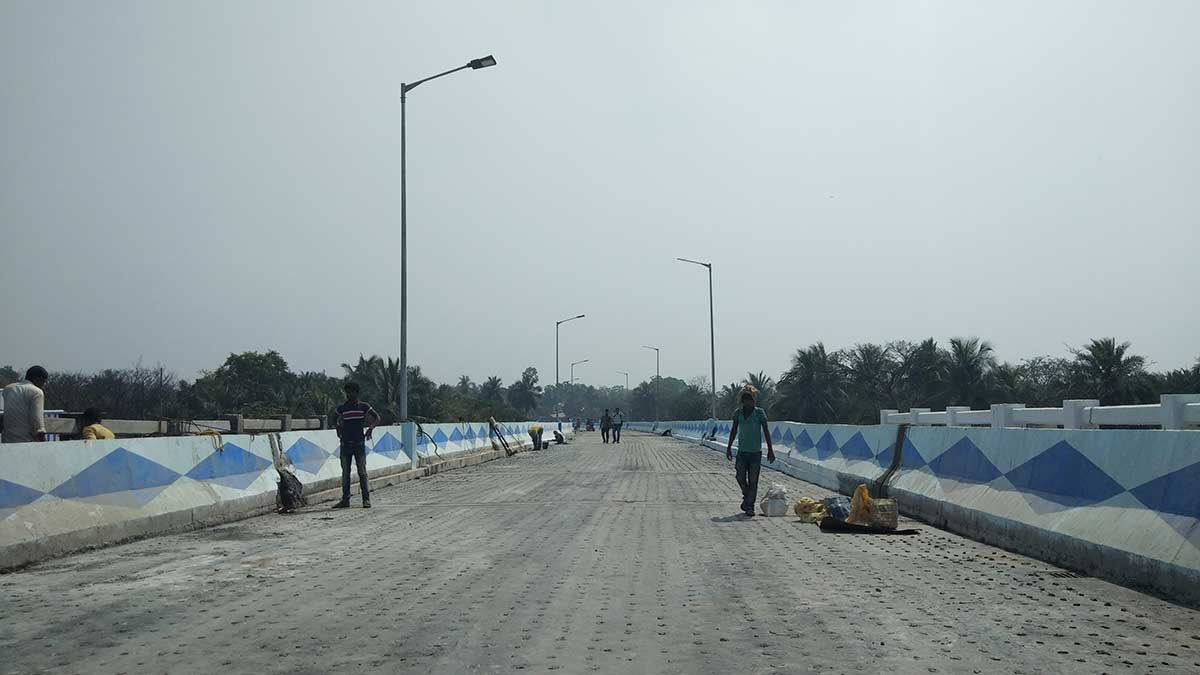What is Mastic Asphalt?
Mastic Asphalt is a bituminous design mix containing ingredients bitumen, coarse aggregate, fine aggregate and filler material. It is working as a waterproofing material and used as wearing course for a whole range of construction work of roads and bridges. It protects structural concrete and flexible pavement top from wear and tears due to environmental impact. Percentage of bitumen content consider for the design of mastic asphalt is preferably 14 – 17%. Nowadays it is also used for roofing, tanking and flooring to avoid seepage of water.

Also, Read: Concrete Subbase Course – DLC Construction
Construction of Mastic Asphalt:
Construction materials for Bitumen Mastic:
The following construction materials are used for the execution of mastic works:
Bitumen: Industrial Bitumen of grade 85/25 having Softening point of 50-90°C and Penetration at 25°C in 1/100 cm is 10-40 satisfying all requirement of IS:702-1988.
Coarse Aggregates: Coarse aggregates will be from an approved source, consist of crushed rock of aggregate impact value not more than 20 and abrasion value not more than 40 and satisfying all other requirements and they will be clean, hard and durable of the cubical shape, free from dust and soft or brittle matter, organic or other harmful substances.
Fine Aggregates: Fine Aggregates will be from an approved source, consist of crushed stone satisfying requirements and they shall be clean, hard and durable, dry and free from dust and soft or brittle matter, organic and other harmful matter.
Filler: Filler will be limestone powder passing 75 microns IS sieve and shall have a calcium carbonate content of not less than 80% by weight conforming to IS:1195-1978 and satisfying the requirements.
Equipment and Machinery for Mastic Asphalt Construction:
The following equipment and machinery are used for the execution of mastic works:
- Bitumen Mastic cooker – ½-1 tonne capacity-1no
- Tack coat spraying appliance
- Wheelbarrows and Flat mortar pans adequate in numbers to suit to the requirements
- Wooden trowels, heavy wooden floats, suitable hand tools, guage, straight edge and hand level
- Angle irons or wooden strips required to contain the mastic in required width and thickness
- Water tanker – 1 number
- Broomer – 1 number
- Air compressor – 1 number
- Measuring can
Survey and Setting Out Works for Bitumen Mastic:
The limits of mastic asphalt marked as per the established grid lines and benchmarks etc. after completion of the BC laying as per approved construction drawings.
Preparation of Mastic Asphalt Mix and Transportation:
Mastic Asphalt manufacture involves the following stages:
- The required quantity of materials for the mix will be converted to volumes with the help of a measuring can.
- Heating of filler alone will be done to a temperature of 170 – 200°C in a mechanically agitated mastic cooker.
- Half the required quantity of bitumen heated to 170 – 180º C will be added with filler and cooked for one hour after proper mixing.
- Fine aggregate and another half bitumen (at 170 – 180º C) will be added to the above-prepared mix in the cooker and heated at 170 – 200º C for another hour.
- After that, the required quantity of coarse aggregates will be added, and heating of the mix will continue for an extra one hour.
- During mixing and cooking, utmost care should be taken to ensure that the mix in the cooker at no time heated to a temperature exceeding 205ºC.
If the material is not required for instant use, will be cast into blocks of each weighing about 25 kg. The Bitumen Mastic blocks (without Coarse Aggregates), when subsequently meant to be used at the site, will be transported to the site. The blocks will be broken into pieces of size not exceeding 60mm cube and re-melted in the cooker at a temperature of 170 – 200º C.
Mastic Asphalt Laying:
Preparation of Base for Bitumen Mastic:
- The base, i.e. the BC surface over which Bitumen Mastic is to be done will prepared, shaped and conditioned.
- The surface will be swept clean and made free from dust and other harmful matter.
- Spots rich in binder shall be scraped and repaired.
- The Tack Coat will be applied under clause 503 of MORTH. The rate of application shall be as per Table 500-2 of MORTH.
- The tack coat will be left to cure until all the volatiles has evaporated before any subsequent construction is started.
- To receive and contain the mastic MS angle section or wooden strips of size 25 mm are placed at required spacing till the finish of the job.
Transportation of Mix:
The mix will be transported in the wheelbarrows/flat mortar pans. To prevent sticking of the molten material to wheelbarrows/mortar pans, the inside of the same will be sprinkled with a minimum quantity of fine inorganic material limestone filler dust. However, in case, the mix is to be transported over a long distance, the same shall be done with towed mixer transporter with adequate provision for a stirring arrangement so as to keep the aggregates and filler suspended in the mix till the time of laying.
Laying of Mastic Asphalt Mix:
- The Bitumen Mastic will be deposited directly on the prepared base immediately in front of the spreader where it is spread uniformly by means of wooden floats to the required thickness.
- The mix will be laid in one-meter width confined between standard angle iron or wooden strips of size 25 mm to receive and contain the mastic of required thickness.
- The temperature of the mix at the time of laying will be at least 170º C.
- In case blowing takes place while laying the Bitumen Mastic, the bubbles will be punctured while it is hot and the surface treated well.
- Extreme care will be taken while fixing angle iron or wooden strips, and their level checked with the instrument at suitable intervals.

Also, Read: Dense Bituminous Macadam (DBM) Preparation and Laying Methodology
Mastic Asphalt Joints:
All construction joints will be made by warming the existing Bitumen Mastic by application of an excess quantity of hot bitumen mastic, which afterwards will be stripped off to make it flush with the surface on the other side.

Also, Read: Asphalt Concrete/Bituminous Concrete(BC) Construction Guide
Surface Finish of Mastic:
After spreading the Mastic Asphalt bitumen pre-coated aggregates of approved quality of 9.5 – 13.2 mm size is pressed or rolled into the surface when the temperature of mastic asphalt is between 80 – 100ºC. The chips shall be pre-blended with S 65 grade bitumen where lime powder may be added over it to avoid sticking with one another. Flakiness Index of stone aggregates used for anti-skid measures will be less than 25%.

Also, Read: Dense Bituminous Macadam (DBM) Construction Requirements
Limitations to Construction of Mastic Asphalt:
Laying will be postponed while free-standing water is present on the surface over which mastic asphalt is to be laid, or during rain, fog and dust storms. After the rain, the water present over the bituminous surface should be blown off with a high-pressure air jet, or the surface left to dry before laying. Laying of mastic, asphalt mix will not be permitted below 10ºC or when the wind speed exceeds 40 km/hr at 2.0 m height.
Opening to Traffic:
We can allow traffic after completion of the work when the Mastic Asphalt temperature at the mid-depth of the completed layer has cooled to the daytime maximum ambient temperature.
Also, Read: Wet Mix Macadam Construction and Quality Control






I would like technical news regarding civil infrastructures methodology of Highway related.